Cuba rising: Los Carpinteros air political views in Mexico City
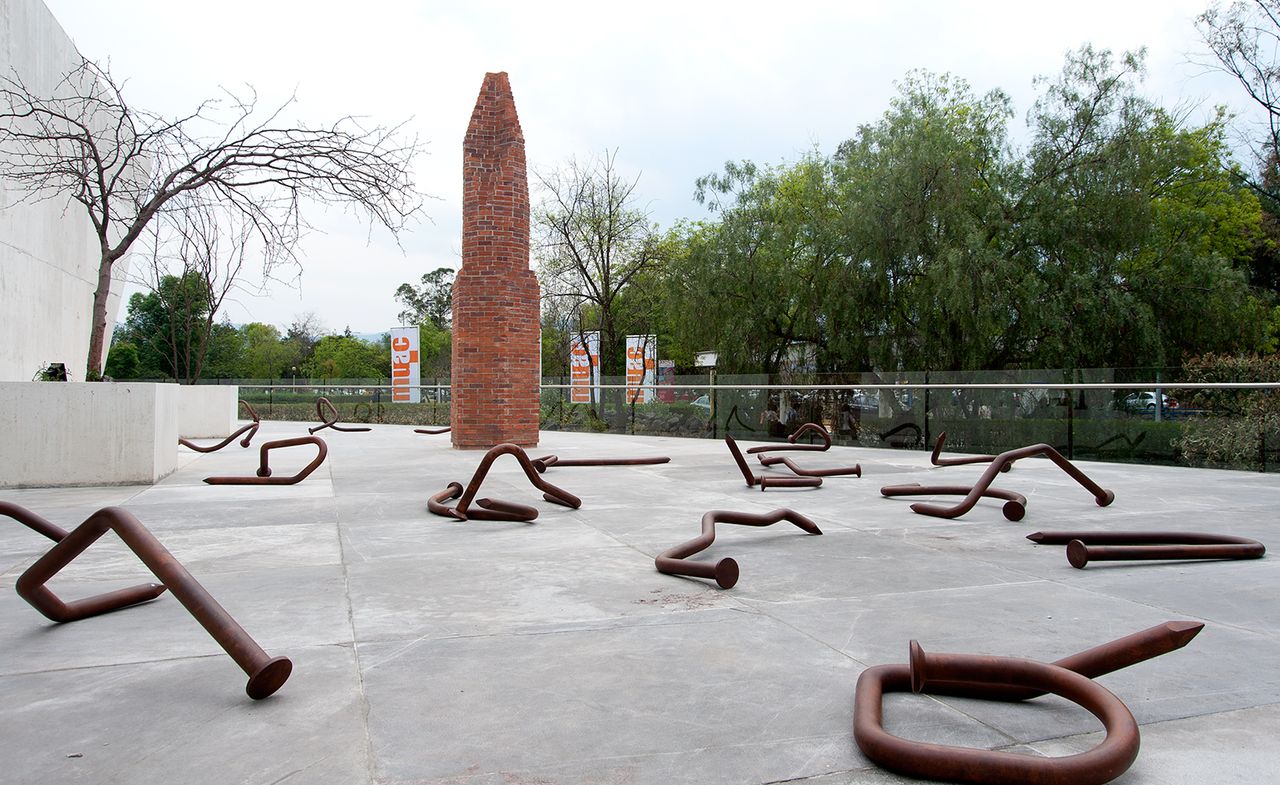
‘I don't know how, but when we moved out of Cuba we started thinking more about Cuba,’ says Dagoberto Rodríguez of Los Carpinteros, the renowned art collective he operates with his fellow Cuban-born, Madrid-based collaborator Marco Castillo. ‘People move out of Cuba to forget about Cuba but we moved out to think about it more.’
This obsessive nostalgia is on full display through September in the group’s new exhibition at Mexico City's Museo Universitario Arte Contemporaneo (MUAC). ‘They are mostly political reflections,’ says Rodríguez.
The work – comprising drawings, sculptures, and installations — spans the last decade, beginning with Faro Tumbado, a 25 foot-long sculptural replica (with the same timed flashes) of a felled lighthouse that stood in the entrance of Havana Harbor. The piece, which the duo completed in Cuba in 2006, is now in the collection of the Tate Modern.
‘It's very funny, we did this in 2006, but this year Fidel Castro fell on his knee and that was the beginning of his retirement from politics,’ says Rodríguez. ‘The lighthouse was kind of a premonition. The revolution used this phallic image to remind you of the power of its ideas, so we wanted to show it on its side, but still lit.’
It lies in opposition to Candela, an LED-lit ‘revolutionary fire’ that invokes the illuminated reliefs of Che Guevara and Camilo Cienfuegos in Havana's Plaza de la Revolución. In addition to these installations are two star-studded works – Movimiento de liberación nacional, a series of star-shaped charcoal barbecues; and 17m, a 17-metre-long clothing rod that holds some 200 black suits shot through with a star-shaped hole – and a reproduction of the 2013 installation Tomates, which is comprised of walls bombarded with tomatoes then fitted with porcelain sculptures of the politically-charged fruit. Outside, they have installed 40 contorted human-scaled iron nails for their Clavos Torcidos, which mimics the bodies (or ‘the beauty of the waste’) at the battlefield of Gettysburg.
‘The whole show looks very tough,’ says Rodríguez, acknowledging that curator Gonzalo Ortega, who originally conceived the exhibition for Museo de Arte Contemporáneo de Monterrey, identified a ‘poetic activism’ that tied all the works together. ‘But it's not so obvious, we are more focused in the language of the pieces.’
That language comes to life in the video from their controversial Conga Irreversible performance during the 2012 Havana Biennial. The work saw the duo enlist 100 performers and musicians to enact and play the traditional carnival procession known as comparsa – from Havana’s famous Paseo del Prado to the Malecón – in reverse: an impossible taunt to an intractable regime. Little could they know then that four years later President Obama would be projecting a way forward for their country by touring these same streets with Raul Castro.
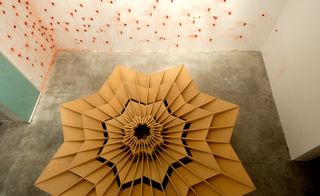
The work spans the last decade and includes a reproduction of the 2013 installation Tomates, comprised of walls bombarded with tomatoes then fitted with porcelain sculptures of the politically-charged fruit
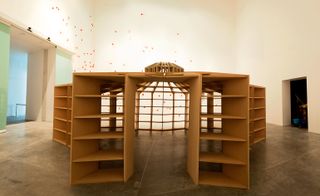
Tomates is shown alongside Sala de lectura Estrella, 2015 (pictured) – a star-shaped wooden structure that also articulates the group's architectural leanings
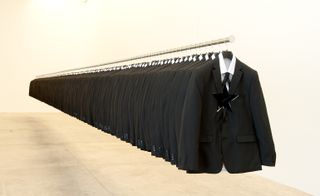
Other highlights include 17m, 2015 (pictured) – a 17m-long clothing rod that holds some 200 black suits shot through with a star-shaped hole...
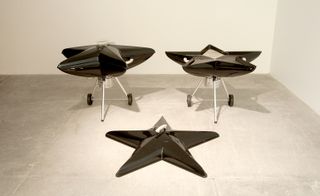
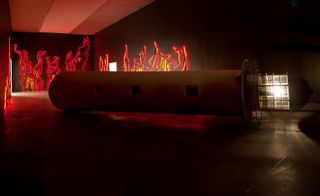
Faro Tumbado, a felled 25ft-long sculptural replica (with the same timed flashes) of a felled lighthouse that stood in the entrance of Havana Harbor, is particularly memorable. It was first completed by the duo in Cuba in 2006 and is now in the collection of the Tate Modern
INFORMATION
’Los Carpinteros’ is on view until 4 September. For more information, visit the MUAC’s website
Photography courtesy the artists and MUAC
ADDRESS
Museo Universitario Arte Contemporáneo
Insurgentes Sur 3000
Centro Cultural Universitario
Delegación Coyoacán
Mexico City
Wallpaper* Newsletter
Receive our daily digest of inspiration, escapism and design stories from around the world direct to your inbox.
-
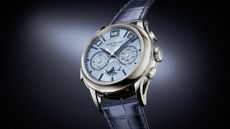 Patek Philippe brings 15 new timepieces to Watches and Wonders 2025
Patek Philippe brings 15 new timepieces to Watches and Wonders 2025The Swiss manufacturer showcases its intricate complications and elegant designs at the annual trade show with a suite of new models
By Anna Solomon Published
-
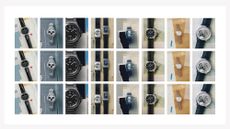 Watches & Wonders 2025: preview Richemont’s latest innovations, on show at the Geneva watch fair
Watches & Wonders 2025: preview Richemont’s latest innovations, on show at the Geneva watch fairDiscover eight enticing timepieces from the luxury group, showcased this week at the Geneva fair
By Simon Mills Published
-
 Masters of midcentury modern design and their creations spotlighted in new book
Masters of midcentury modern design and their creations spotlighted in new book‘Mid-Century Modern Designers’ is a new book from Phaidon celebrating those who shaped the period and their notable creations, from furniture to objects
By Tianna Williams Published
-
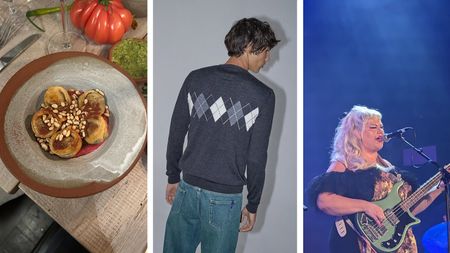 Out of office: what the Wallpaper* editors have been doing this week
Out of office: what the Wallpaper* editors have been doing this weekInvesting in quality knitwear, scouting a very special pair of earrings and dining with strangers are just some of the things keeping the Wallpaper* team occupied this week
By Bill Prince Published
-
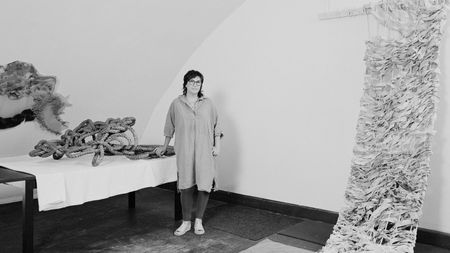 Tanya Aguiñiga: the artist weaving new narratives for borderless creativity
Tanya Aguiñiga: the artist weaving new narratives for borderless creativityWe profile LA-based artist and Loewe Foundation Craft Prize finalist Tanya Aguiñiga, whose work explores life on the US-Mexico border and seeks to empower transnational voices
By Harriet Lloyd-Smith Published
-
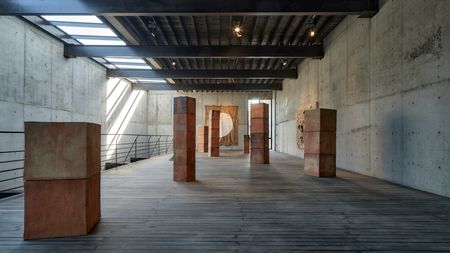 Bosco Sodi’s monumental new Mexico City studio is a multifunctional feat
Bosco Sodi’s monumental new Mexico City studio is a multifunctional featAs Bosco Sodi unveils his new Studio CMDX in Atlampa, Mexico City, we speak to the artist about how the vast Alberto Kalach-designed former warehouse is a feat in multitasking
By Juliana Piskorz Published
-
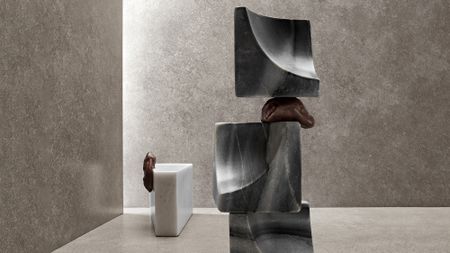 Artist’s Palate: Jose Dávila’s chocolate fudge with pecans
Artist’s Palate: Jose Dávila’s chocolate fudge with pecansTry Jose Dávila’s indulgent recipe for chocolate fudge with pecans, from our December 2022 issue’s Artist’s Palate feature, a Wallpaper* homage to our favourite contemporary art
By TF Chan Published
-
 Botanical sculptor Azuma Makoto creates a sculptural ecosystem at Mexico’s SFER IK
Botanical sculptor Azuma Makoto creates a sculptural ecosystem at Mexico’s SFER IKJapanese artist Azuma Makoto’s largest flower sculpture to date responds to SFER IK’s unique biophilic design and the surrounding wilderness
By Pei-Ru Keh Last updated
-
 Mexico City art hub JO-HS opens inside a modernist icon
Mexico City art hub JO-HS opens inside a modernist iconNew exhibition space and creative hub JO-HS opens inside a striking example of modernist Mexico City architecture by Carlos Herrera
By Harriet Lloyd-Smith Last updated
-
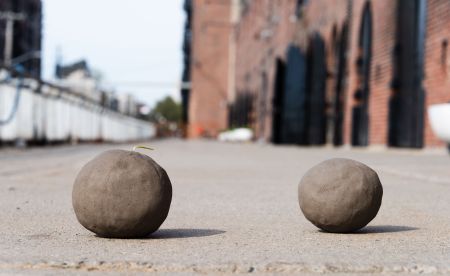 Bosco Sodi’s message of post-pandemic hope in New York City
Bosco Sodi’s message of post-pandemic hope in New York CityThe Mexican artist takes over Manhattan's Washington Square Park on Sunday 23 May, giving away 439 small clay spheres embedded with seeds to spread a message of hope
By TF Chan Published
-
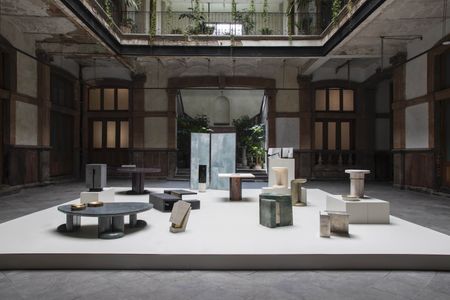 Unno gallery shines a spotlight on Latin American design talent
Unno gallery shines a spotlight on Latin American design talentOffering a new point of view on the region's talent, Milan-based digital gallery Unno makes its debut with a series of collectible design objects that reference ancient aesthetics with a contemporary spin
By Rosa Bertoli Last updated